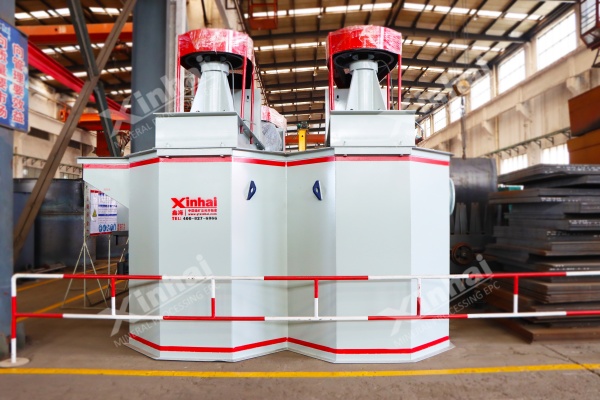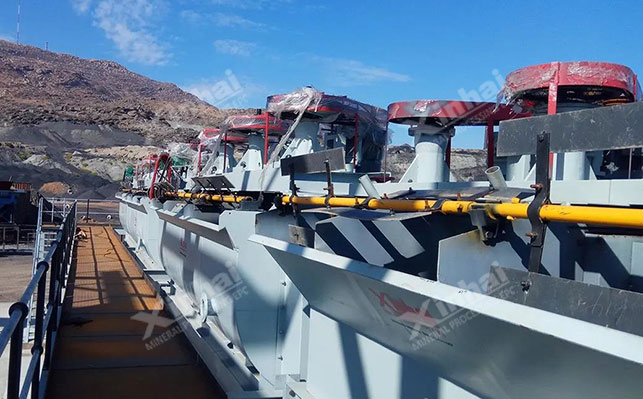If you want to know more information (such as product/process price, etc.), please contact us 24-hour telephone
High-purity quartz sand is a common raw material in the semiconductor and fiber optic communication industries. The aluminum content in quartz sand directly affects its performance, and according to the latest standards, the aluminum content for Grade I products should be ≤6.79 mg/kg. Removing aluminum from quartz sand has become a crucial task. This article will analyze the five core technologies currently used to remove aluminum from quartz sand.
1. Radiation Resistance Decreases: Aluminum atoms can form lattice defects under γ-ray irradiation.
2. Thermal Stability Decreases: In high-temperature environments, structural deformation can occur, with an 18% increase in the thermal expansion coefficient at 1200°C.
3. Dielectric Loss Increases: Aluminum impurities can affect the quality of fiber optic signal transmission, typically increasing loss by 0.02 dB/km per ppm of aluminum.
1. Aluminum in Clay Minerals: This accounts for about 35% and can be easily removed through physical scrubbing.
2. Aluminum Replacing Silicon in the Lattice Structure: This accounts for about 45% and requires special processing.
3. Aluminum in Feldspar and Mica: This accounts for about 20%, with particle sizes mostly between 50-200 μm.
1. Scrubbing and Desliming Technology
The scrubbing process typically involves three stages:
Coarse Scrubbing: Using a scrubber with a wheel speed of 180 rpm to remove aluminum impurities larger than 80 μm.
Fine Scrubbing: Adjusting the scrubber to 240 rpm to enhance scrubbing force and remove finer particles.
Ultrasonic Assistance: Using 40 kHz ultrasonic cavitation to precisely remove micron-level attached substances and thoroughly strip aluminum impurities from the mineral surface.

2. Gradient Calcination-Acid Leaching Combined Process
Gradient Calcination: Gradually increasing the temperature in steps (650°C/2h → 850°C/1.5h → 1100°C/1h) to effectively leach aluminum.
Composite Acid Leaching: Using a mixture of HF (15%) and HCl (5%) at 60°C for 4 hours to dissolve aluminum components efficiently.
3. Green Flotation Technology
Flotation Reagent Selection: Using dodecylamine (0.5 kg/t) and sodium petroleum sulfonate (0.3 kg/t) to avoid traditional fluorine-containing reagents, achieving both environmental protection and production benefits.
Flotation Precision Performance: Removing feldspar at a rate above 92% and mica at over 88%, effectively removing aluminum impurities.
Wastewater Treatment Measures: Using lime neutralization combined with flocculation sedimentation to ensure that the treated wastewater has a fluoride content below 2 mg/L, meeting environmental discharge standards.

4. High-Voltage Electrostatic Separation Technology
For microcrystalline aluminum in the 10-100 μm range, using a YD-500 type high-voltage electrostatic separator:
Voltage Range Setting: Precisely controlling the voltage between 30-50 kV to produce an appropriate electric field force for effective separation.
Separation Efficiency Results: Achieving an aluminum removal rate of 79%, significantly improving aluminum recovery and providing strong support for efficient aluminum resource utilization.
5. Bioleaching Technology
Aspergillus niger produces citric acid at a concentration of 25 g/L during metabolism, which reacts with aluminum minerals to promote dissolution. Within 72 hours, the leaching rate of aluminum can reach 68%.
1. Economical Scheme: Scrubbing → Magnetic Separation → Flotation (cost $80/t, Al ≤ 15 mg/kg).
2. High-Purity Scheme: Calcination → Acid Leaching → Electrostatic Separation → Ultrasonic Cleaning (cost $220/t, Al ≤ 5 mg/kg).
The above introduces the five core technologies for removing aluminum from quartz sand. In actual production, it is necessary to combine processes such as scrubbing, flotation, acid leaching, and calcination based on specific conditions to reduce aluminum content and purify quartz sand. Xinhai reminds you to consider the properties of the ore and the final economic benefits of the project when selecting a processing method.